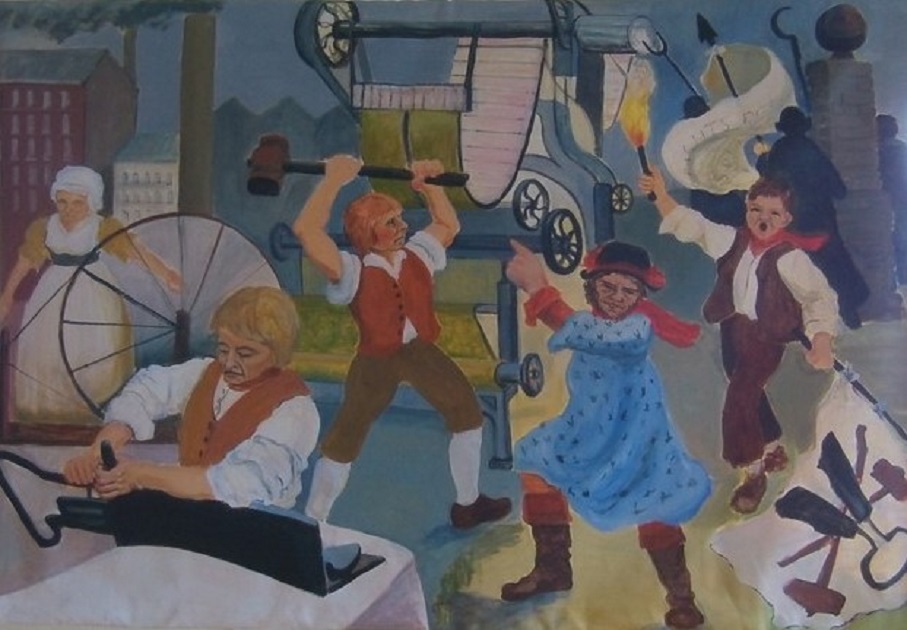| Title | The Quakers of Rawdon, 1600 – 1861 |
| Date | May 2013 |
| Location | Rawdon |
| Written By | Bill Willcox |
| Comment | The Quakers of Rawdon, read on …. |
The Quakers of Rawdon.
For two centuries Quakers, debarred from entrance to English universities, were unable to follow professions such as Law.
Their refusal to take an oath meant they could not hold public office nor enter Parliament.
Their testimonies precluded a military career, and obviously the Church was not considered.
Their talents were channelled towards industry, science and trade, where they gained a reputation for fair dealing and refused to bargain for goods, giving one fixed price at a time when haggling was the norm.
In Yorkshire Quakers became involved in the trade in woollen cloth as clothiers.
Clothiers were entrepreneurs who organised the making of cloth on a large scale before the establishment of the factory system, at a time when cloth was made in the cottages of handloom weavers.
They distributed the raw materials and collected the undyed cloth by packhorse, to take for finishing and sale.
When the four acres of land for the proposed Quaker Meeting House at Rawdon were conveyed to the Trustees on February l5th l697, four of the trustees were described as clothiers, Josiah Grimshaw , Richard Hardaker, Timothy Cowper and Caleb Verity. Another trustee William Butterfield, was a weaver.
The Rawdon Quaker connection with textiles continued in the eighteenth century, and the Bradford Quaker, John Hustler, was one of the prime movers in the promotion of the Leeds and Liverpool Canal which enabled cloth to be carried more cheaply to Liverpool for export.
Quaker clothiers were involved in the setting up of Cloth Halls in Yorkshire towns for the sale of cloth.
When some parts of the cloth production process began to be concentrated in small mills, Quakers in Rawdon were part of that process also.
Low Mill (1796), Park Mill (1805) and Larkfield Mill (1824 ) were all owned or operated by members of the Thompson family, who along with the Grimshaws and Walkers are the most commonly recorded names in the Rawdon minute books and graveyard at this period.
Inevitably, therefore, Quaker mill owners were among those who were involved in the introduction of machinery in the early nineteenth century, and Low Mill was targeted by the Luddites.
In Yorkshire the occupational group most involved in machine- breaking were the croppers, who traditionally undertook a series of processes on rough cloth from the market , most importantly the raising of the nap of the cloth by teazles and shearing it with heavy hand shears.
The gig-mill was an essentially simple device by which, instead of the nap being raised by hand, the cloth was passed between cylinders set with teazles, and employers and employees alike recognised that this and the shearing frame were bound to put skilled men out of work.
January and February 1812 saw a series of almost nightly attacks on mills in the Huddersfield and Spen Valley districts, and the attack on the Quaker-owned Thompson mill at Low Mill came in March 1812 .
However, the introduction of machinery into the textile industry was inexorable once it got fully underway and in the Leeds and Bradford areas spinning machines, power looms and combing machines were introduced in the next fifty years.
By 1833 the Thompson millowners were answering the Queries of the Commissioners for the North East District about their workforce and methods of production that show they were very much in the mainstream of industrial change.
With the concentration of textile production in larger units (mills employing, say, between fifty and one hundred workers, many of those female and aged twenty or under) the number of small woollen manufacturers in Rawdon declined in the nineteenth century- one trade directory lists 35 coloured woollen manufacturers in 1838 and 20 in 1861.
More detailed research in the future may reveal how many of the listed manufacturers were members of Rawdon Meeting, and how many of them adjusted successfully to the challenges of the new age and how many of them went out of business.
Bill Willcox.
Consolidated by Jack Brayshaw. 03 August 2022.
Last updated: 03 August 2022.

